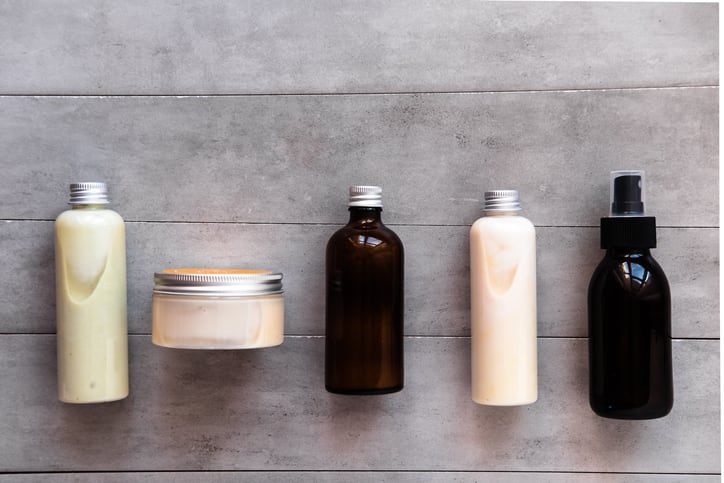The 2019 SEPAWA Congress in Berlin drew in a significant crowd of industry professionals from the personal care and cosmetics sector, and with a dedicated personal care track across all three days, along with a collection of other highly-relevant presentations, there were some clear key themes.
CosmeticsDesign-Europe was at the three-day event and has pooled together some of the forefront talking points that matter.
DIY kits and ‘tribe’ talk for personalised beauty
Several specialists and industry professionals referenced the on-going shift towards personalisation in beauty and personal care; a trend that will clearly continue to grow, driven by consumers.
Attendees heard from Mintel’s global beauty analyst Margaux Caron that personalisation was “still in high demand” - particularly in skin care, fragrance and base make-up - but that demands went “beyond skin deep”.
Caron said consumers wanted brands and products to “cater to their lifestyles but also let them express their unique personalities”.
She said industry had to understand the growing importance of younger generations or ‘tribes’ of consumers that would drive the future direction of personalisation and tap into their needs and demands better. These tribes gathered around values and maintained unique identities with a strong desire for self-expression, she said – an aspect fragrance and personal care brands could target.
Caron suggested a strong future for DIY kits that enabled personalisation on mass scale, as well as micro-targeting underserved consumer demographics like women aged 55+ with product offerings and marketing messaging that better spoke to them.
Green chemistry and free-from for clean beauty
There was also plenty of talk around the clean beauty movement and green chemistry associated with developing products that aligned with consumer expectations.
Marie Arzel, business development manager for customer services at Solvay, said there had been a clear “wake-up call” as consumers demanded industry be “more and more transparent about the sources of ingredients and the impact on the environment”.
Arzel said there were various ways brands and manufacturers could respond – with waterless formulations, simpler ingredient lists, removing certain substances to enable free-from claims, focusing on vegan and cruelty-free or even investing in upcycling schemes.
Solvay, for example, had developed a plant-based ester to replace regular silicones in hair care products that enabled brands to tap into clean beauty needs.
Jessica Welzel from Henkel AG & Co discussed her PhD work within the company that she said would contribute to eventually developing aluminium-free anti-perspirants, tapping into clean beauty.
Welzel presented the 3D sweat gland model her and a team had developed, enabling fast screening of potential aluminium alternatives to better understand how these substances interacted with cells involved in perspiration. The goal, she said, was to have a product on the market next year.
Dead probiotics and postbiotics for skin microbiota
Several specialists focused on the skin microbiota during the three-day congress, talking about the challenge personal care companies had in developing products that worked to protect the living micro-organisms on the skin.
Ev Suess, technical director of cosmetics ingredients EAME at Symrise AG, discussed the importance of better understanding the skin microbiota and ultimately developing products that maintained a good and healthy balance.
While probiotics were a go-to ingredient option, Suess said incorporating these into cosmetics remained challenging because of stability and survival issues and instead presented Symrise’s processed probiotic that was a non-living version with an intact cell structure to trigger the same response than live probiotics.
Andrea Maltagliati, market manager for personal care at ROELMI, agreed on the notion that using live probiotics in cosmetics was challenging and showed ROELMI’s postbiotic active that balanced the environment of a person’s skin microbiota. By protecting the skin microbiota environment, rather than influencing the microbiota itself, the product could be meaningful for every consumer.
Preservative and silicone alternatives for regulatory shifts
Another key discussion area at SEPAWA was the changing European regulatory landscape and subsequent pressure on formulators to work with shrinking ingredient lists.
DuPont and Symrise both presented blends that worked as alternatives to certain preservatives, stating pressure from consumers and the authorities remained on-going and would continue.
Dr. Tony Gough, director of technical services for performance chemicals across EMEA at Innospec, presented a series of alternatives to cyclic silicone formulations, especially to replace the widely-used cyclic silicone D5.
New proposed EU regulations around cyclic silicones were currently in consultation and out for comment, Gough said, and it was anticipated D4, D5 and D6 would be banned within three to six years.
Allergen-friendly formulas also came into the equation, with medical doctor and allergen expert Prof. Dr. med Torsten Zuberbier telling attendees about the growing importance of considering allergy-sufferers when developing new products, especially from a fragrance point of view.
Zuberbier pointed out that formulating with allergies in mind was easy because of the vast number of fragrances industry could choose from and very few known to be allergenic. Industry, he said, didn’t have to completely avoid fragrances, just be mindful with formulations.
Solid cosmetics and water reduction for sustainability
Throughout the entire event, there was a distinct and important dedication to sustainability from almost everyone exhibiting and presenting, with a sharp focus on aligning all aspects of the business, from ingredients sourcing to equipment cleaning.
BASF, for example, launched its new range of 100% biodegradable surfactant alternatives, made using RSPO-certified renewable resources, and Bell Flavors & Fragrances presented its natural encapsulation system for fine fragrances.
Annika Kramer, senior application scientist at Nordmann, discussed the increasing demands for solid cosmetic products – shampoo bars and deodorants, for example – and its work on certain substances to enable this. Kao Chemicals Europe was also focused on developing more options for the solid cosmetics market.
During one presentation, Fanny Fondecave, area sales manager at SILAB, discussed the importance of water use at all stages of the manufacturing process, explaining SILAB’s work to reduce its water use. Fondecave said the company had started sourcing plants from areas of low water stress, reducing the amount of water used to clean equipment and even offsetting water use with ‘ecological compensations’ – working with a French biodiversity organisation on preservation projects.
Stay tuned for more in-depth coverage on the SEPAWA Congress 2019.




